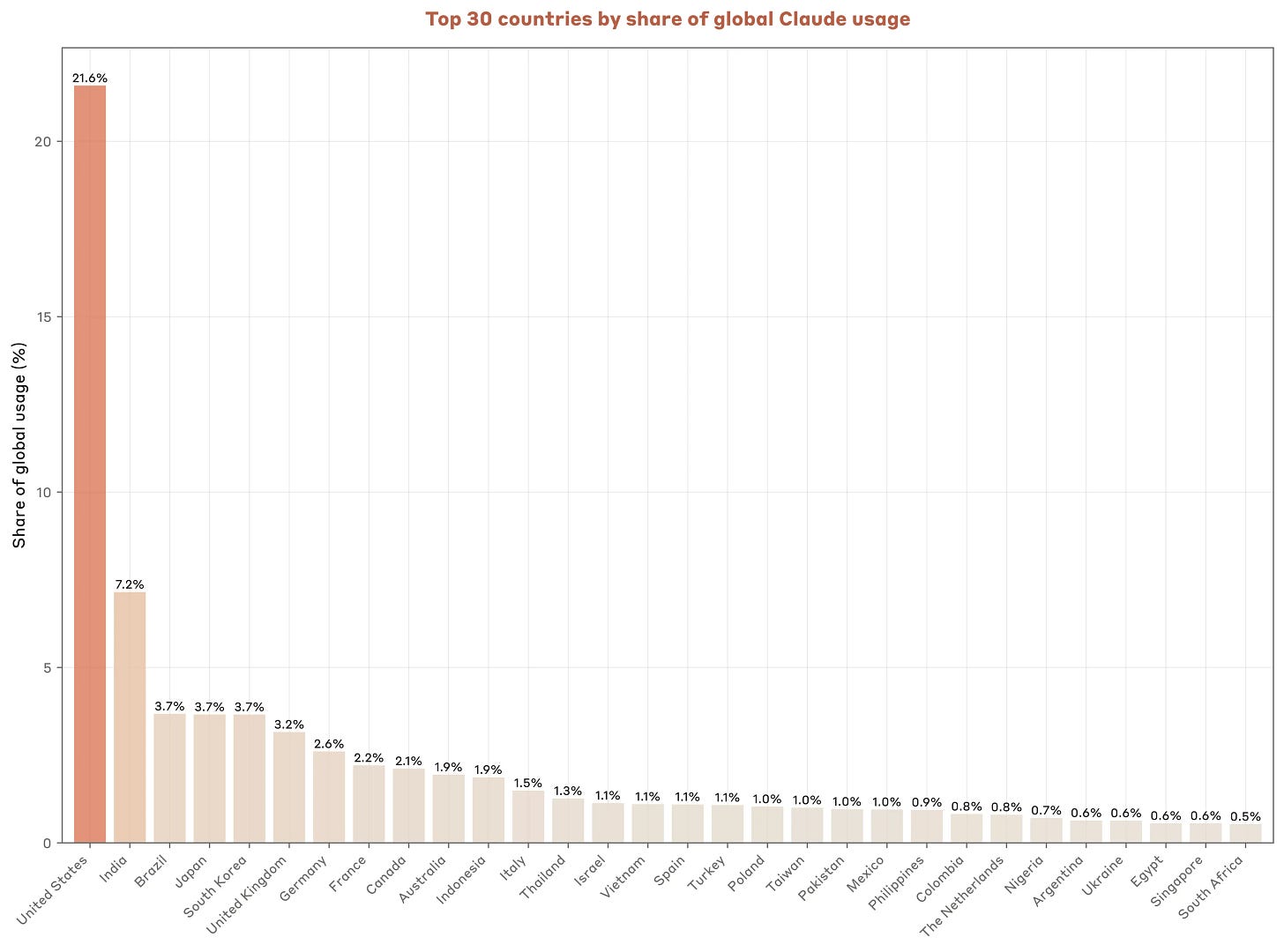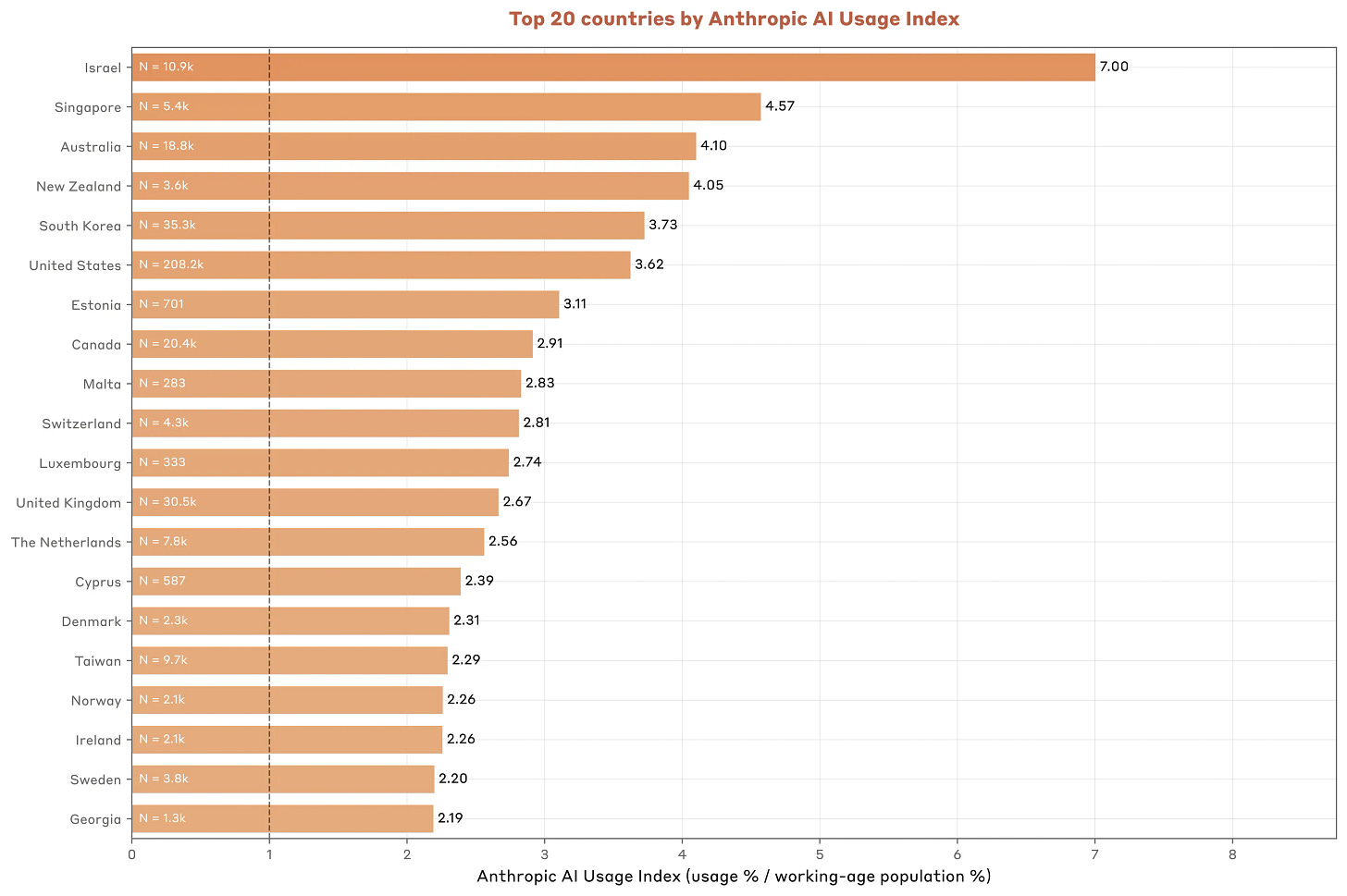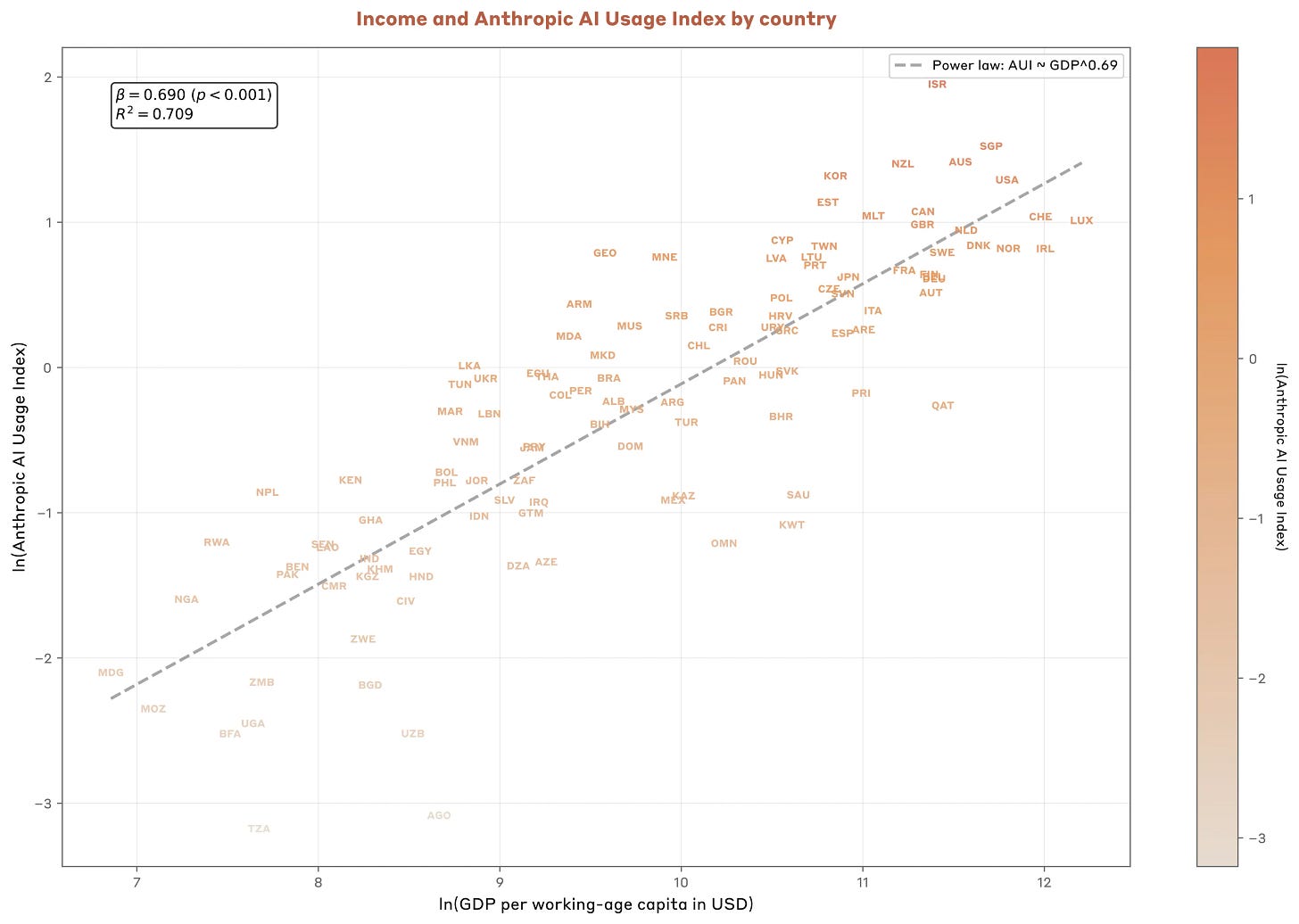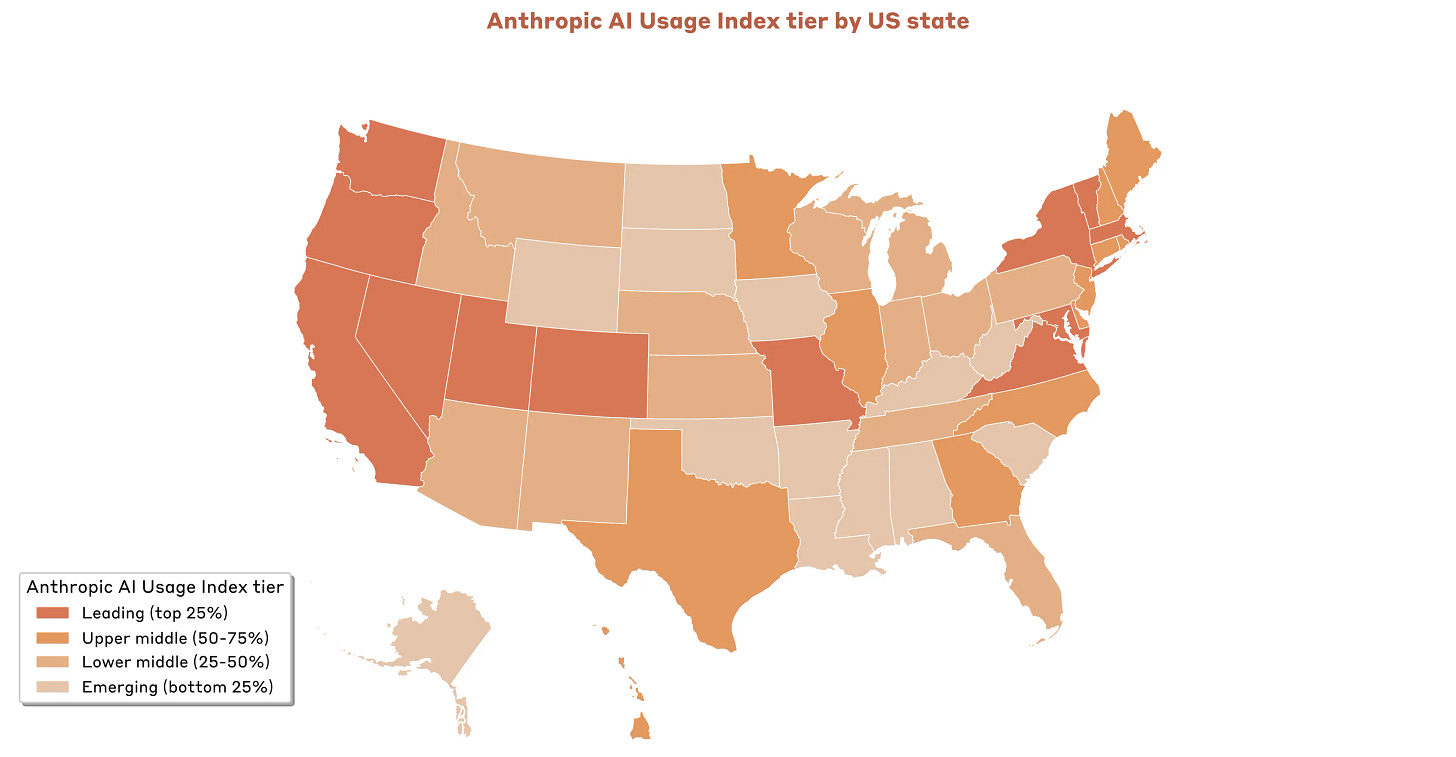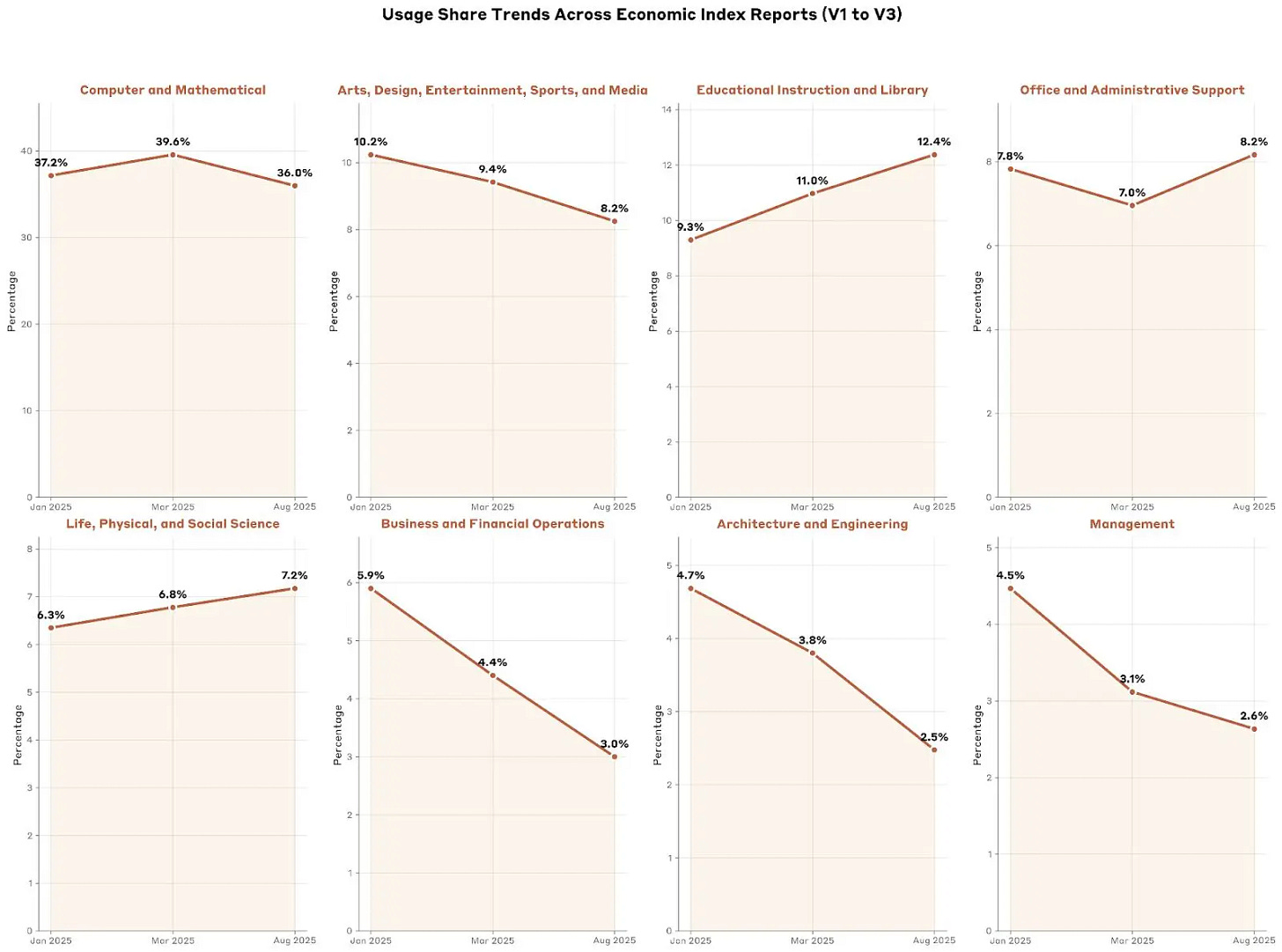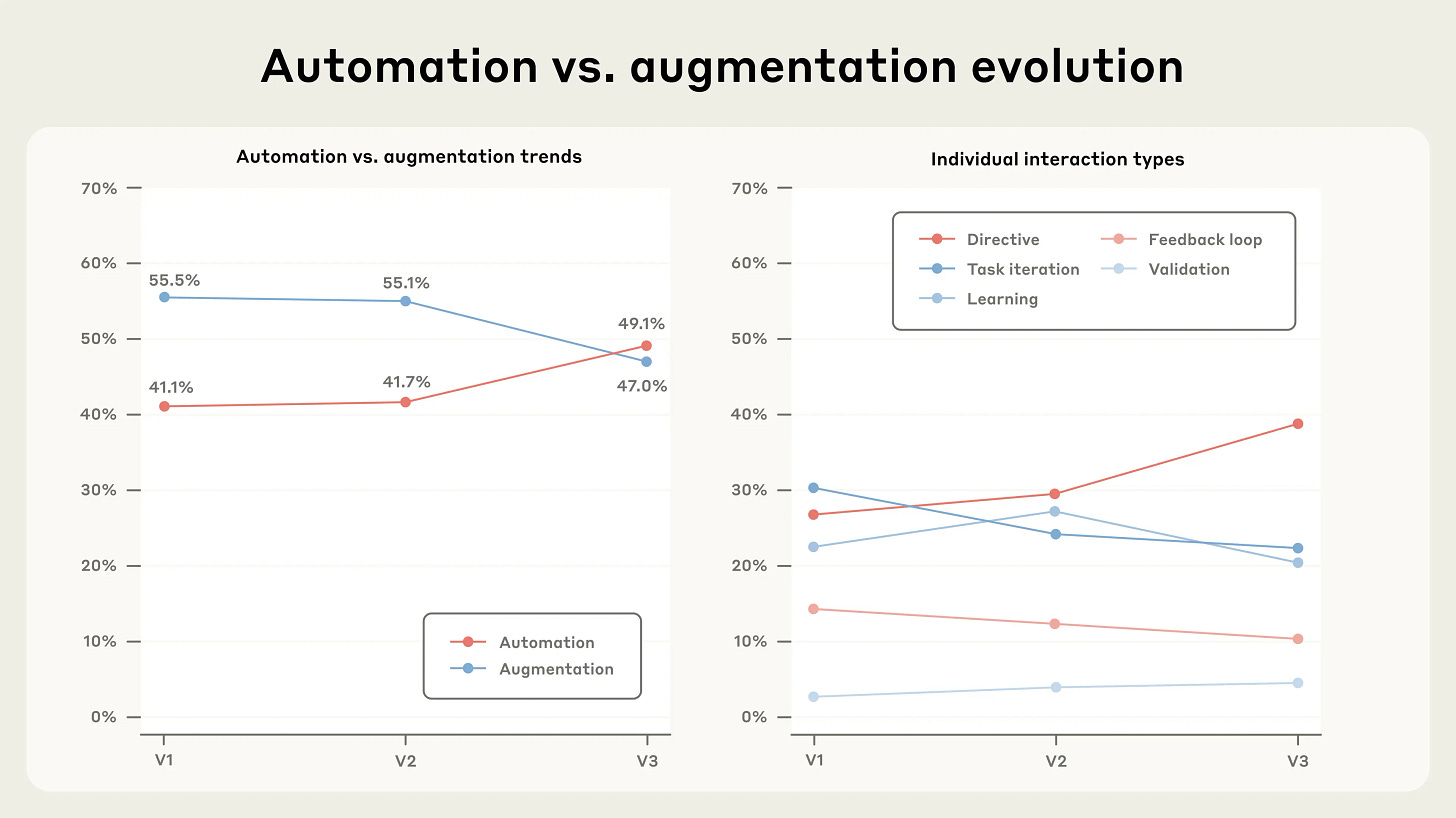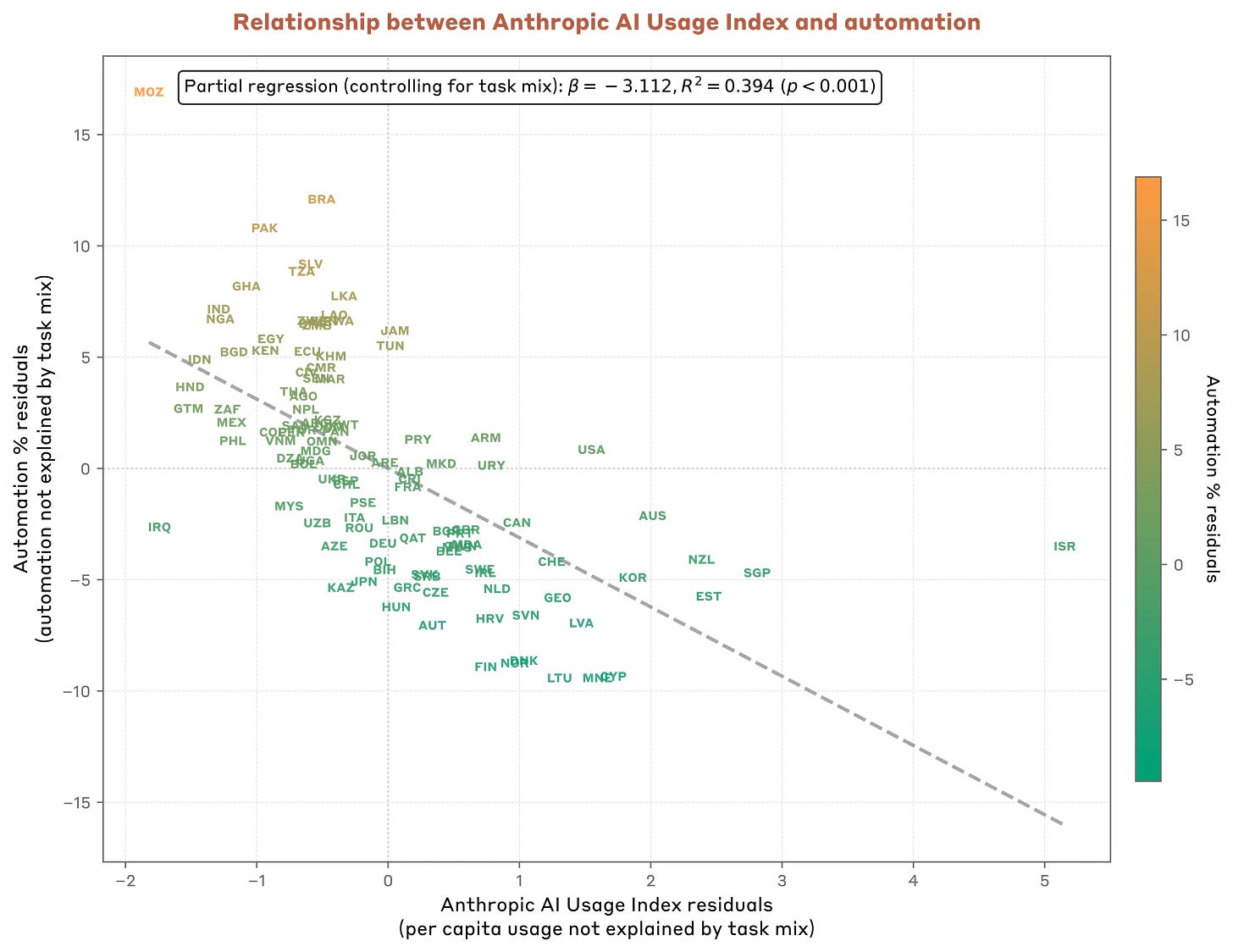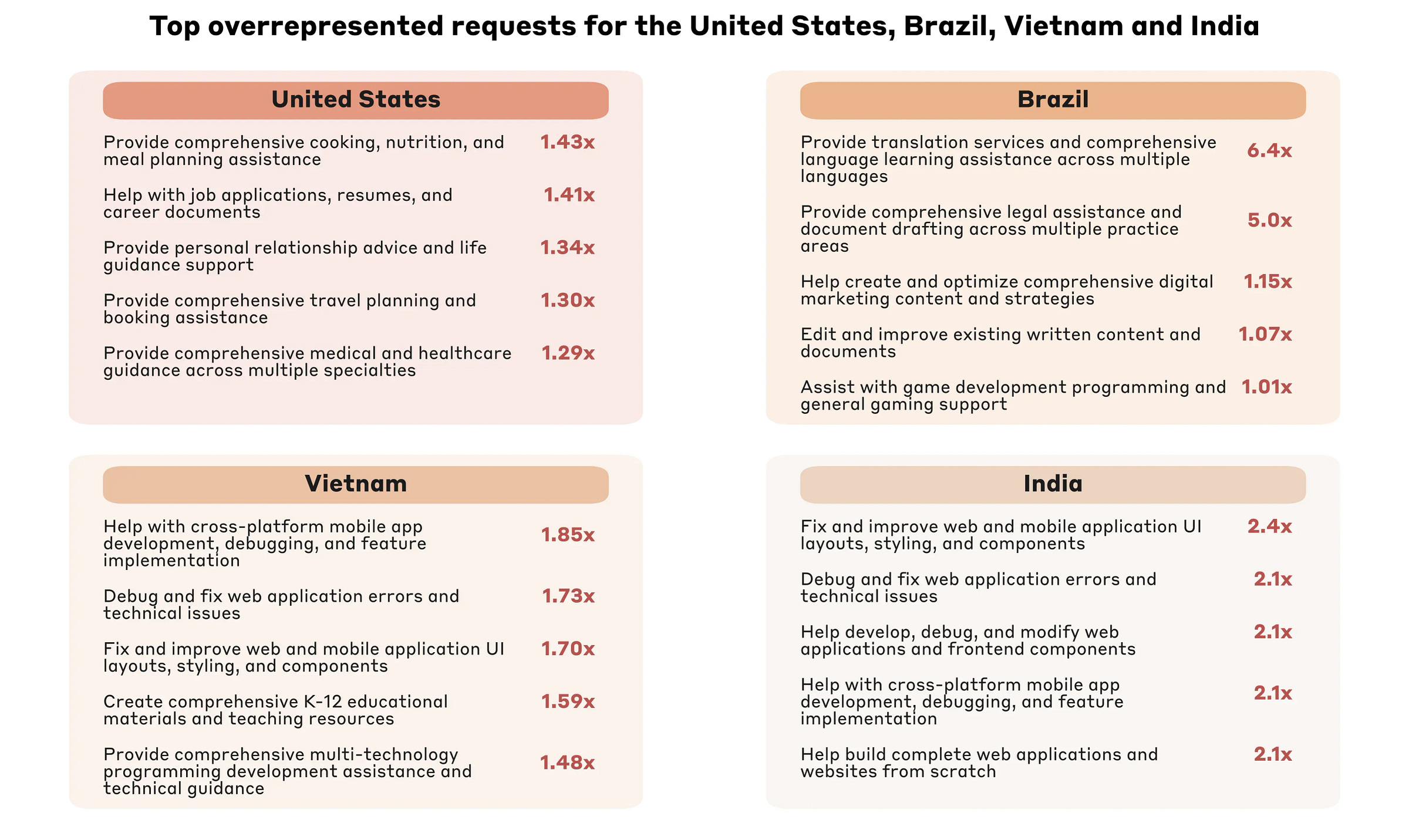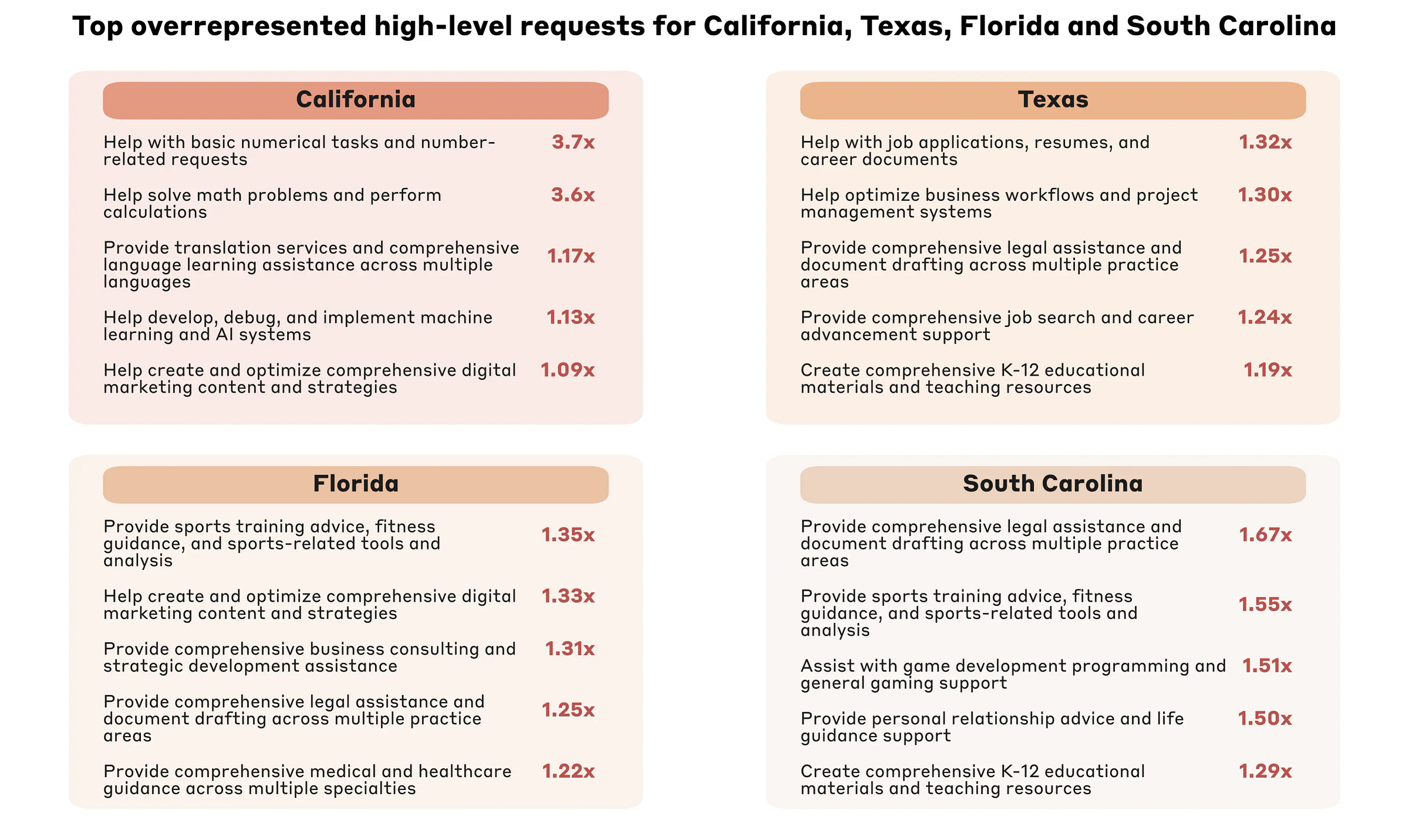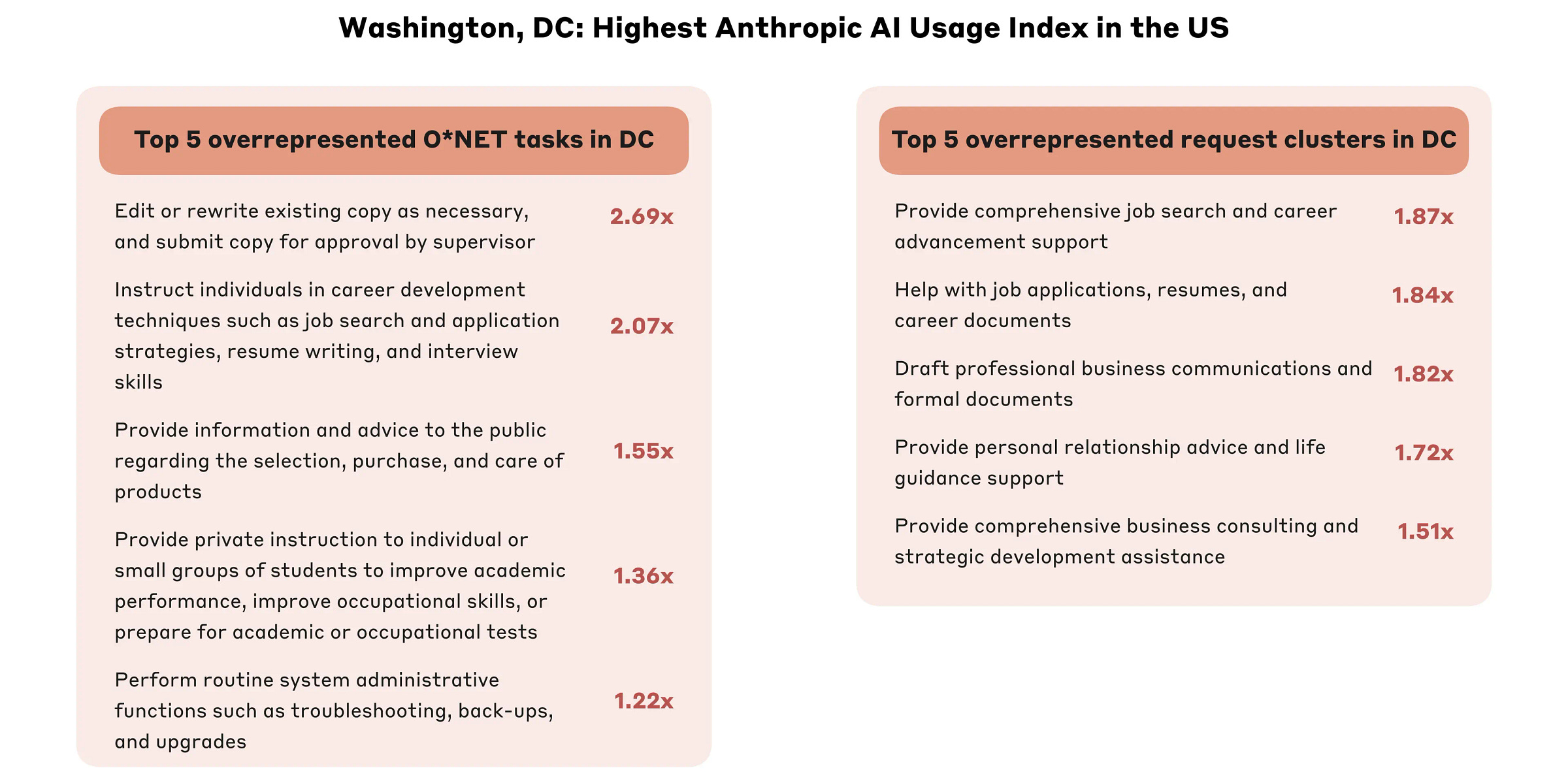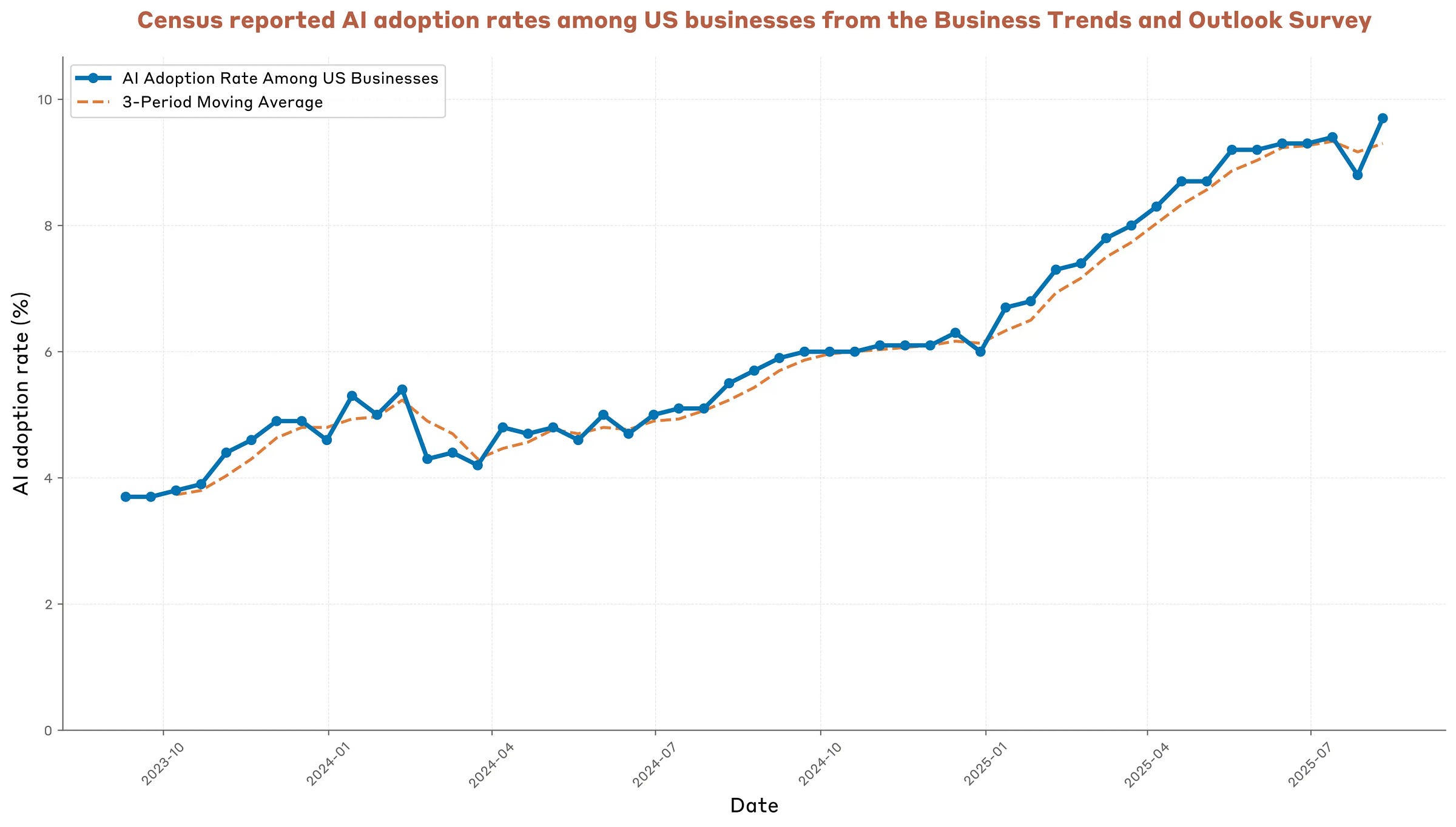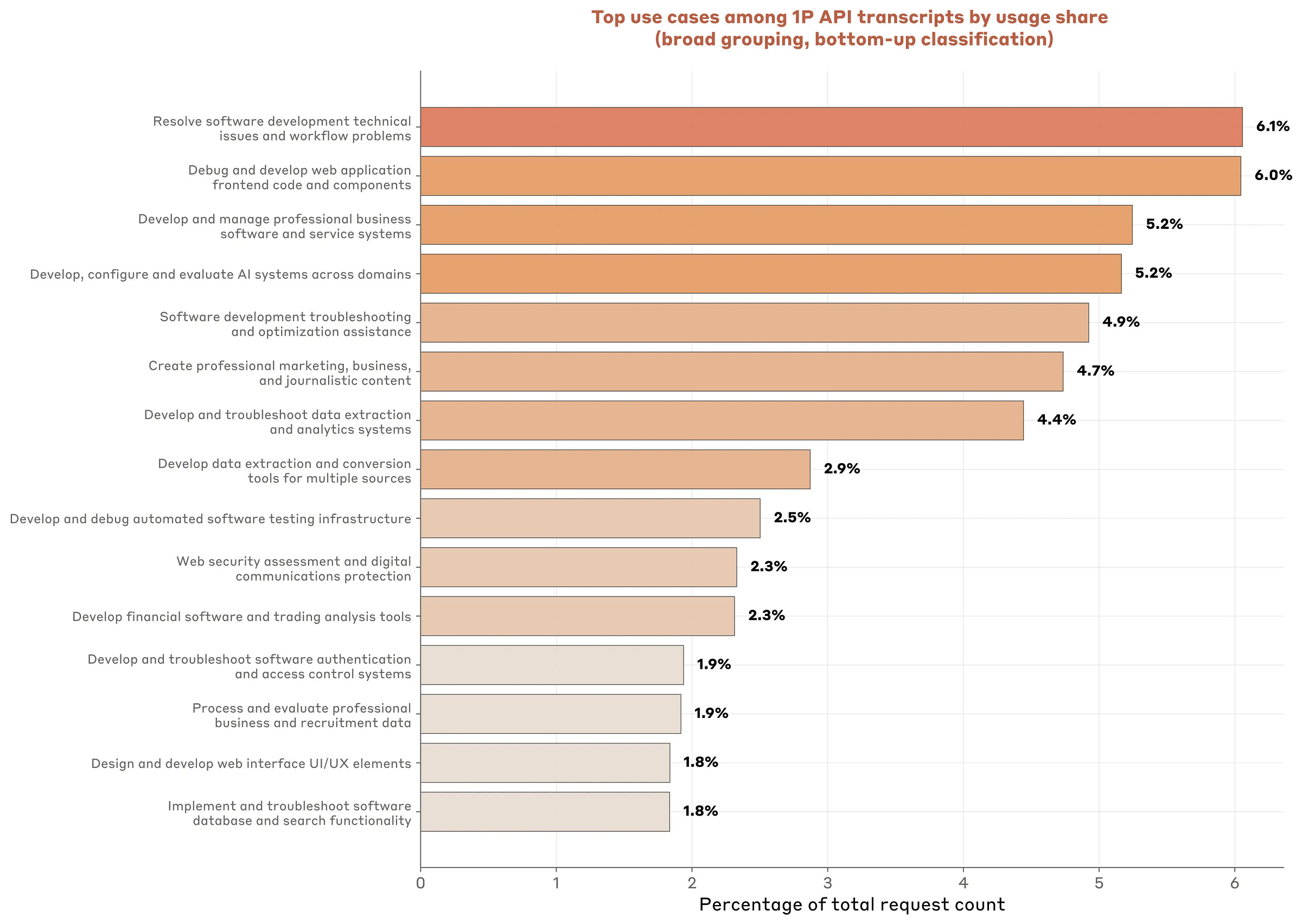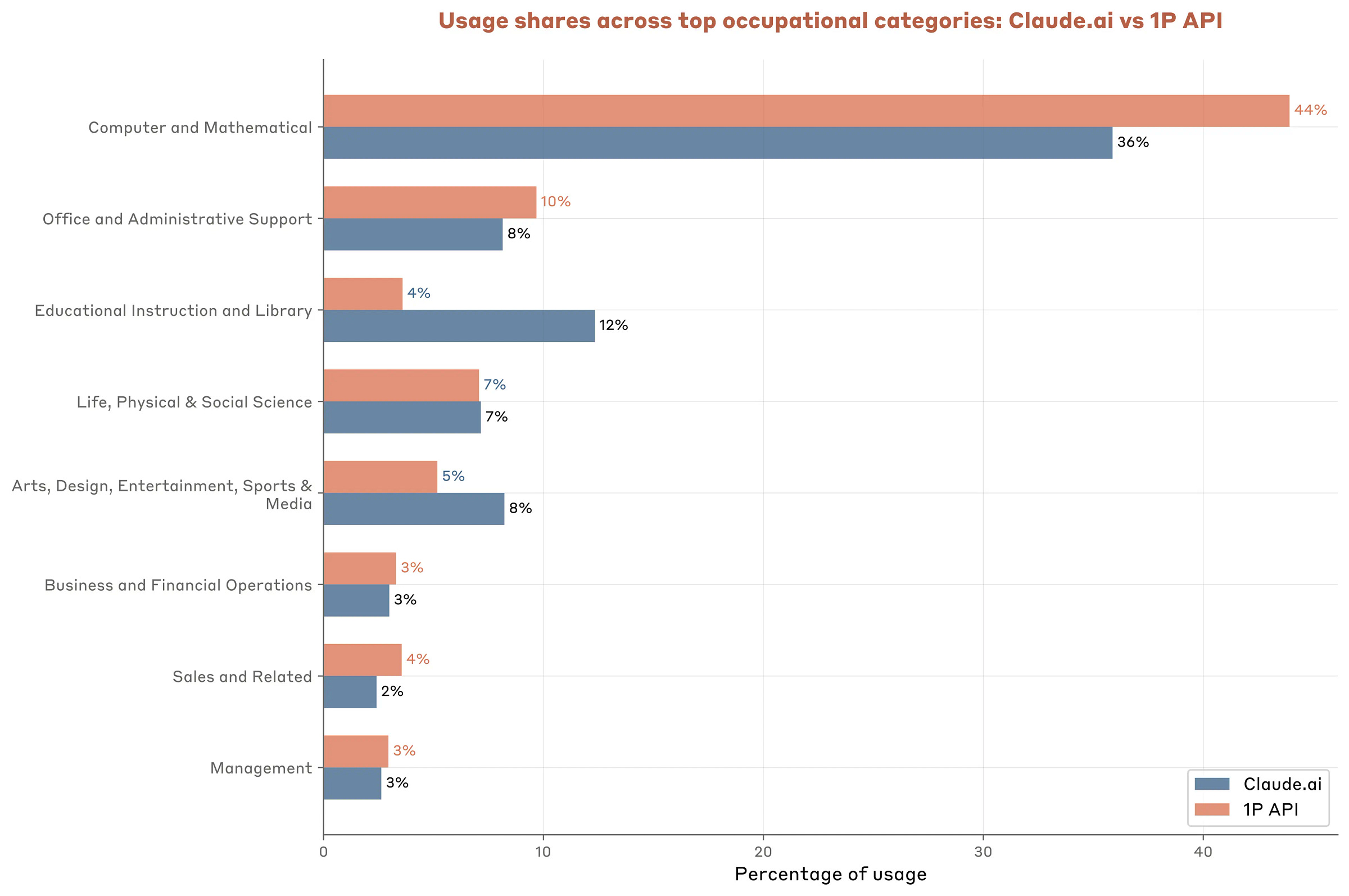Anthropic's Global Use Case is Mounting for Enterprises
Economic index and new funding to go global.
Here at the Machine Economy Press we think a lot about AI’s impact on things like innovation, jobs and how companies are adopting AI. Anthropic is going to have a moment in 2026. Here’s why:
In late May, 2025 Dario Amodei, the head of the company behind AI model Claude 4, issued a blunt warning in an interview with website Axios, saying that half of all entry-level white-collar jobs could be potentially wiped out by artificial intelligence within five years, potentially driving up the unemployment rate up to 20%. While his claims about AI coding reaching 90% in six months didn’t come true Anthropic has some interesting data on AI’s impact on automation.
In 2025 we have seen considerable growth in Claude Code and AI’s ability to automate some aspects of coding. Meanwhile Anthropic did a huge funding round, In September, 2025 Anthropic announced it has closed a $13 billion funding round at a $183 billion post-money valuation.
On September 15th, Anthropic unveiled its latest Economic Index which shows a lot of clues to the future of its global growth and gaining marketshare in terms of API and Enterprise usage.
Like Databricks, Cohere and Alibaba, here the B2B potential is incredible for Anthropic.
While Google has gained the most marketshare now with its Gemini app surpassing that of OpenAI for the first time, Anthropic that has been funded by the likes of Amazon and Google, and truly ready to go global.
The economic index doesn’t seem special at first - the interactive report breaks down how usage of the Claude chatbot varies by country as well as by state — within the U.S. — identifying which states are using the technology more and for what purposes. But this is valuable data.
While OpenAI’s moat in consumer AI doesn’t really have a great moat, the winners in B2B and Enterprise AI are going to have considerable leverage to keep their customers. Anthropic is generally believed to be ahead in AI coding, one of the central use cases of Generative AI.
In 2025 Anthropic expects to 5x its revenue. That is, as of August, Anthropic said its run-rate revenue has reached more than $5 billion, up from roughly $1 billion at the beginning of the year. By the end of 2025, it could very well end up being higher.
The U.S. States that Use Claude the Most?
Just like countries like Singapore, Israel and Canada are high adopters of AI, so too it seems are some U.S. states relative to others.
Axios Notes:
People are also using AI for different tasks across states.
In Hawaii, tourism is a major driver of Claude usage, while in D.C. a lot of people are using the chatbot for job searches and writing tasks.
Coding is a major task for people in California.
Higher-skilled workers are benefiting more than entry-level workers, perhaps because they can fill in gaps in Claude's knowledge.
Which brings us to Anthropic’s whole automation vs. augmentation duality. It notes the majority of businesses are using AI for automation.
Which Countries use Claude the Most?
U.S
India
Brazil
Japan
South Korea
UK
“A new report from Anthropic, a rival to OpenAI, reveals that businesses are primarily using its Claude AI software for automation, with 77% of usage involving automation patterns, including full task delegation. The findings, based on an analysis of API traffic, highlight a trend that raises concerns about AI potentially disrupting livelihoods.”
Claude Code is likely having some material impacts on the SWE career track weakening and lessening entry level positions. It’s not clear how this will turn out, with even Claude Code enabled “vibe coding” having an impact on Product Managers and the PM career track, for example.
Top Countries by Usage
Israel
Singapore
Australia
New Zealand
South Korea
From the AUI data, we can see that some small, technologically advanced countries (like Israel and Singapore) lead in Claude adoption relative to their working-age populations.”
Whatever the fate of junior software engineers and the increasingly hybrid vibe-coding nature of Product Managers, AI’s impact in Tech companies is becoming more significant.
Key Trends of Anthropic’s Economic Index 2025 - TL;DR
Anthropic's new usage data reveals uneven AI adoption, with wealthier countries, higher-skilled workers, and certain U.S. states benefiting more, potentially exacerbating global inequalities.
Workers are adopting AI tools like Claude faster than previous technologies, but this disparity could widen existing economic gaps.
The interactive report analyzes Claude chatbot usage by country and U.S. state, highlighting variations in adoption relative to population.
California, Washington D.C., and Utah show the highest Claude usage per capita in the U.S., while southern and Plains states are underrepresented.
Usage patterns differ by state: Hawaii focuses on tourism-related tasks, D.C. on job searches and writing, and California on coding.
Higher-skilled workers leverage Claude more effectively to augment their roles, compared to entry-level workers who benefit less.
Globally, wealthier nations like Israel, Singapore, and Canada exhibit higher per capita usage, while emerging markets such as India and Nigeria lag behind.
In high-income countries, Claude primarily augments human work; in lower-income ones, it's used more for automation, though long-term job impacts remain uncertain.
The report warns that AI could repeat historical tech trends, concentrating productivity gains in rich regions and potentially reversing global growth convergence.
Anthropic aims to promote transparency by openly sharing the data from 1 million anonymized conversations in August 2025, with plans for ongoing research to track AI's economic diffusion.
Is Anthropic’s Claude Code going to be a force for the Automation of Jobs?
It’s ironic that Anthropic that prides itself on being ethical and more into AI alignment might have a more detrimental impact if poorer countries use it more for automation than in high-skilled countries where it’s used more augmentation.
This suggests U.S. capex might have a bad impact on other countries and accelerate wealth inequality throughout the world in the next decade. U.S. AI Supremacy at the expense of the rest of the world! They warn us as if this is not in their control, which feels especially misaligned and dire. Anthropic raising so much means it’s just another pawn of the incentives of shareholder capitalism now.
In general we can generalize it as such, where B2C vs. B2B is concerned:
“While the two companies used different datasets and methods, OpenAI’s analysis suggests the consumer versions of ChatGPT are used mainly for personal and exploratory purposes, whereas Anthropic’s findings show Claude.ai and Claude API are primarily used for work-related tasks like coding, research, and education.”
So is B2C AI more benign? OpenAI shared its own report which likely cherry picks the data.
Anthropic as an AI for Science and Automation Company?
Quoting directly from the report:
“Education and science usage shares are on the rise: While the use of Claude for coding continues to dominate our total sample at 36%, educational tasks surged from 9.3% to 12.4%, and scientific tasks from 6.3% to 7.2%.
Users are entrusting Claude with more autonomy: “Directive” conversations, where users delegate complete tasks to Claude, jumped from 27% to 39%. We see increased program creation in coding (+4.5pp) and a reduction in debugging (-2.9pp)—suggesting that users might be able to achieve more of their goals in a single exchange.”
OpenAI is investing more in Education while Anthropic might invest more in AI’s impact on academia and Science it would seem in 2025. Based on how their use base uses their tools a bit differently.
Anthropic’s Warning
Anthropic’s CEO likes to warn and boast so where is the warning of this Index Report of 2025: [sort of what you might expect, as far as fear-mongering goes].
“If the productivity gains are larger for high-adoption economies, current usage patterns suggest that the benefits of AI may concentrate in already-rich regions — possibly increasing global economic inequality and reversing growth convergence seen in recent decades," Anthropic said in the report.”
If the U.S. is harbinger of AI automation that hurts poorer countries, you can imagine BRIC nations are going to rally against them. Which will add some peculiar impacts of AI to geopolitics in the decades ahead.
Correlation between Income and how AI is Used
Poorer countries appear to use AI more for automation
Richer high-skilled countries appear to use AI more for “augmentation”
OpenAI claims: The three most common ChatGPT conversation topics were categorized by researchers as practical guidance, writing, and seeking information: these three categories collectively account for nearly 78% of all messages.
AUI here refers to Anthropic AI Usage Index (AUI).
This would suggest it’s in OpenAI’s best interests to continue building a Search competitor to Google, and not just build out an army of consumer apps like they plan to do with Twitter and LinkedIn clones.
Anthropic has no other choice but to double down on AI coding and whatever its Enterprise customers and developers want. It’s easily potentially the most disruptive impact to jobs. Claude Code’s rise might be a boon and a curse for Anthropic, if I’m reading this report and its implications right.
Are Higher Income Brackets Correlated with more Power uses of AI?
Again from the report:
“In fact, use rises more quickly within income here than across countries: a 1% higher per capita GDP inside the US is associated with a 1.8% higher population-adjusted use of Claude. “
Anthropic believes the differences in use by U.S. States is also due to “differences in the composition of states’ economies” which makes some sense:
Anthropic’s API use closely correlates with Automation
Read their head economist on this.
He goes on to say:
“Firms use Claude to automate tasks: 77% of API transcripts we analyze exhibit automated forms of use.”
That’s a lot more automation than augmentation, guys.
Lower-adoption countries tend to see more coding usage, while high-adoption regions show diverse applications across education, science, and business.
Singapore and Canada are among the highest countries in terms of usage per capita at 4.6x and 2.9x what would be expected based on their population, respectively.
Canada as you might know (where I’m from) is mostly a talent portal to the U.S., while Singapore is certainly an AI chip and business portal of China.
West Coast and East Coast Dominate Claude Usage
Anthropic’s recent mega funding round was led by the likes of Iconiq, Fidelity Management & Research Co. and Lightspeed Venture Partners.
Claude is a STEM Machine
“Since December 2024, computer and mathematical uses of Claude have predominated among our categories, representing around 37-40% of conversations.”
Is Science and Education the Final Frontier of AI Use?
Anthropic’s Claude usage patterns are also fairly interesting to behold. As its API marketshare increases its having more of an impact on institutions, rather than just individual usage. This has predictable rises in specific areas.
Science
Education
Administration
Coding and Math
Higher GDP States and Nations use Claude Differently
“The overall trend is noisy, but generally, as the GDP per capita of a country increases, the use of Claude shifts away from tasks in the Computer and Mathematical occupation group, and towards a diverse range of other activities, like education, art and design; office and administrative support; and the physical and social sciences.”
In this a matter of GDP or just better integration of Claude in their activities though?
Automation appears to be increasing over time
As models get better white collar professionals trust the outputs more and that is leading to more automation. That is, directive outputs.
What does this suggest as models continue to get better in the 2020s? More complex AI agentic workflows might accelerate the impact of AI on automation.
Perhaps surprisingly, in countries with higher Claude use per capita, Claude’s uses tend towards augmentation, whereas people in lower-use countries are much more likely to prefer automation.
Anthropic calls augmentation, as using AI in a more “collaborative manner”. Well not sure about that, Education and Science are by default collaborative institutions.
Calling augmentation benign, compared to automation, might not be the best framing of this data to be honest. Anthropic’s sharing of the data here becomes more complicated.
Am I supposed to think that Washington and Utah are more “collaborative” in their use of AI? DC leads per-capita usage (3.82x population share), but Utah is close behind (3.78x).
In the real world, changes to how AI is used in Government is going to lead to a lot of rela human jobs lost as we have seen already with DOGE and the Trump Administration’s policies.
This report leaves me quite unsettled. It points to an America that accelerates automation and unemployment in poorer regions of the world in part due to its capital intensive investments in AI Infrastructure and companies like OpenAI, Anthropic, xAI and Thinking Machines.
How else am I supposed to look at this in terms of the end-game ramifications?
The uneven geography of early AI adoption raises important questions about economic convergence.
Rise of BigAI could have Polarizing Automation Implications
But it also raises important questions on the impact of American capex in datacenters on the global economy, inequality and rich vs. poor dynamics of the future of civilization. If BigAI are going to have a net positive impact on the world, it doesn’t appear like poorer regions will seem much benefit compared with lucrative American corporations and their executives and AI talent who earn big money already.
"The AI usage index introduced in the report will be a very useful framework for understanding how this diffuses throughout the economy," McCory said. But why am I not feeling as excited?
The Economic Index is designed to provide an early, empirical assessment of how AI is affecting people’s jobs and the economy.
But the implications point to U.S. capex being detrimental to the world in ways that would harm the people who needs to use the benefits the most.
AI likely to Hasten Growing Inequality
If the productivity gains are larger for high-adoption economies, current usage patterns suggest that the benefits of AI may concentrate in already-rich regions—possibly increasing global economic inequality and reversing growth convergence seen in recent decades.
Anthropic makes no comment on the deteriorating American Middle Class, or the bifurcation of rich vs. poor in the U.S. in the report, at all.
Miscellaneous
Patterns of usage by Country:
Patterns of usage by State
Trouble in Washington D.C.?
Businesses in the U.S. continue to Adopt Claude AI
Claude API Directly tied to Rise in AI Coding and Vibe Coding Tasks
We already knew that Claude Code is seeing traffic mostly via Github Copilot and Cursor, but this really drives it home:
Claude Code is becoming an AI coding and No-code agent and is likely to become a lot more in the future.
Claude for Science
Is Claude a Tool for Automation?
In our data, 77% of API transcripts show automation patterns (especially full task delegation) versus just 12% for augmentation (e.g., collaborative refinement and learning).
and:
Looking across economic tasks, the degree of Claude automation through the API is even starker: 97% of tasks show automation-dominant patterns in API usage, compared to only 47% on Claude.ai (Figure 3.6).
“This pattern echoes how economically consequential technologies become transformative: becoming embedded in systems that let workers access productivity gains without needing specialized skills.” - Anthropic said.




